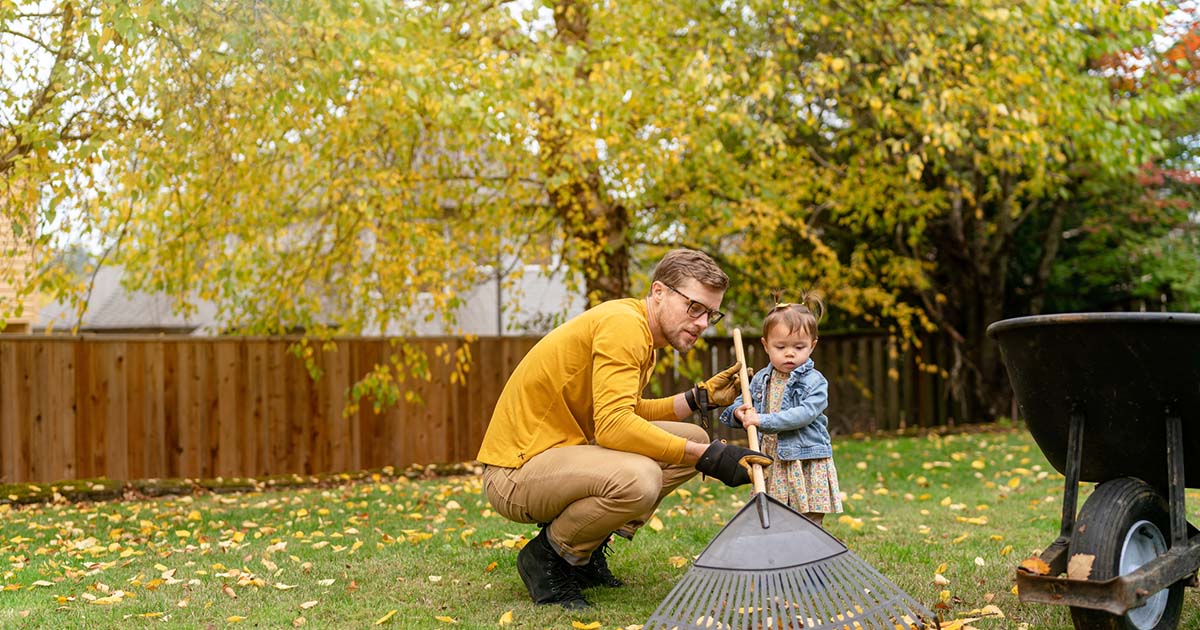Fall Gardening and Lawn Care

Fall gardening and lawn care tasks include mowing, watering, fertilizing, and aerating your lawn, removing leaves and dead plants, and preparing perennials for spring.
Mowing your lawn in the fall
Because your lawn will keep growing until the first frost, you should keep mowing it even in the fall. It should be 2 ½ to 3 inches (about 7 centimetres) long. If it is any longer, it will be vulnerable to snow mold and other fungi but mowing it shorter will make the root system shorter and it will be more difficult for your lawn to survive the winter. Mowing your lawn in the fall also chops up leaves and turns them into mulch, which is good for the grass.
Rake the leaves
Despite what many people believe, leaves do not insulate your lawn. They trap moisture, block light, and can kill your lawn. Keep raking leaves even after they have fallen off the trees, especially in areas where they build up.
Keep watering
Keep giving your lawn about an inch of water per week until you need to turn your irrigation system or outdoor water off. Water your plants until the ground freezes.
Aerate your lawn
Aerating stops soil from becoming compacted and covered with debris that blocks water, nutrients, and oxygen. Aerating fixes these problems by punching holes and pulling up plugs of soil. Compacted soil should be aerated every year and areas without a lot of traffic can be aerated every 2 or 3 years.
Add seeds or sod
Filling bare areas of your lawn with sod or seeds is an important part of fall lawn care. Cooler temperatures will help it grow, just make sure to water it regularly. You can also spread seeds across the whole lawn so you can introduce resilient grasses and fill any sparse areas. Seeds need to be in contact with the ground, watered until they germinate, and they need to be established before winter. You can use a seeding machine to make the process easier.
Fertilize
Fertilizing your lawn in the fall helps it bounce back in the spring. Fertilize your lawn after it has been aerated so the nutrients can reach its roots. Using 24-0-10 (the nitrogen, phosphorus, and potassium percentage by weight) fertilizer in late fall helps with cold resistance, root growth, drought tolerance, and protection from disease.
Clean up dead plants and weeds
Clear out debris so there is less to do in the spring. Make sure to remove diseased plants to prevent bugs and diseases from causing problems next year.
Plant bulbs for spring
You may think that gardening ends with summer, but fall gardening gives you a head start for spring gardening. September or October is the best time to plant perennial bulbs that bloom in the spring, like daffodils and tulips. Add 4-5 inches (about 12 centimetres) of mulch on top of perennials after the ground freezes.



